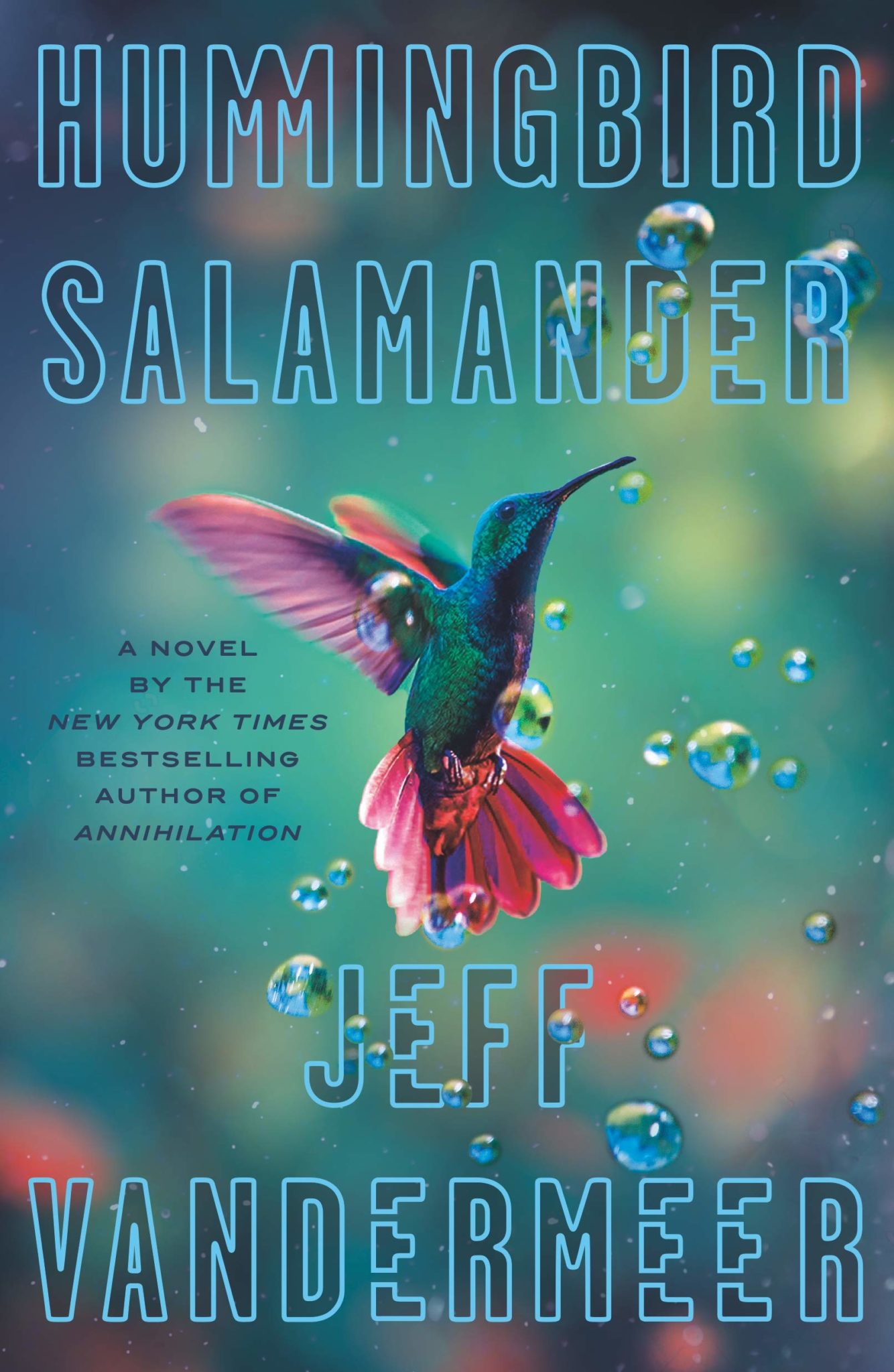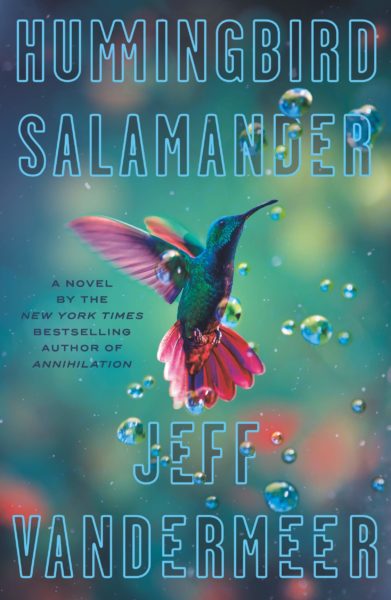

“Hummingbird Salamander,” a spy fiction written by Jeff VanderMeer, was published April 6. It greets readers with a taxidermied animal and dives into ecological issues often regarded as the problems of the future. The narrator describes what the audience needs to know to understand the setting and nothing more. After a perfect setup at the end, she flips and completely subverts the genre.
The narrator introduces themselves in an indifferent prologue, saying the reader can call them “Jane Smith.” Then Jane states bluntly, “I’m here to show you how the world ends.” Straight from that revelation, the book begins, painting a bleak picture for the remainder of the novel, leaving the reader guessing how the world would arrive at that depressing point throughout the book.
As I delved deeper into Jane’s life and family dynamic, I also discovered how closely related the setting is to the current time period. Refined drones owned by large corporations deliver products, but power hungry politicians and other technology remain nearly the same, implying that the book is set in the very near future. Across the “Hummingbird Salamander” world, natural disasters such as tornadoes and hurricanes surge across the landscape, and pandemics become increasingly common.
The background information illustrates the overarching theme throughout the book — one that differs from many of VanderMeer’s previous novels. In previous eco-thrillers written by VanderMeer, life was replaced by more life, such as alien life coming to Earth and taking over the plant life and eventually the entirety of Earth. In contrast, life in “Hummingbird Salamander” simply dies without replacement. The novel doesn’t showcase a lifeless wasteland but rather demonstrates the destruction that ensues if we let our wastefulness continue to fester beyond the point of return.
A major motif in the novel is taxidermy: stuffing dead animals with synthetics to be used as decoration. Two taxidermied animals, an extinct hummingbird and an extinct salamander, each found at separate times, form in the story as clues left behind by an eco-terrorist for Jane to find and follow.
These seemingly unimportant animals serve as symbolism in countless different ways, including a reminder of the search she had begun, and occasionally the family she lost. More ways are discovered throughout the book, seeming as if they could apply to every situation Jane finds herself in. Interestingly, it can also be interpreted conversely: Jane forcing the animals to fit into any situation she found herself in to justify her drastic actions in investigating the taxidermy, as well as for following the story of the woman leading her along, Silvina.
As Jane investigates further, not only does she uncover more of Silvina’s past, but she also discovers more about her own background and how it was forever changed by the corporation and family of an eco-terrorist. She is eventually led to a solution created to solve the ecological issues of the time, but discovers that she took too long and the creators were long gone, one of them having been Silvina. Simultaneously, she realizes that she left everything behind in her desperation to follow Silvina’s clues and after more reflection, realizes what she lost in order to gain this knowledge, information she would never have a chance to use.
Through the demonstration of the solution Jane discovers in the facility, it is clear how desperate the situation is, which Jane slowly realizes as well. The whole experience covers Jane’s entire journey from being excited and relieved, to finding what she had searched so long for, to the crushing defeat as she realizes it is too late for any of the discoveries to matter. While she has been caught up in the puzzle, the world has changed around her, reaching unthinkable levels of natural disaster that we only hypothesize about now.
Jane lost her job, family and much of her moral compass in search of a vague mystery set up for her to learn about her past, but in the process failed to look around and see what it meant on a larger scale. She was so focused on what it meant specifically to her situation that she failed to notice what she was discovering could be useful in other ways. In the end, Jane learned the importance of species going extinct and started to want to work towards saving the environment more than before. Unfortunately, she was just in time to watch it all burn down.
VanderMeer’s novel seeks to bring to light the grave impacts today’s actions could have on the world in the future in the unique form of a spy fiction. As the book nears its end, it swaps out of the genre, instead drawing attention to how, in a real situation, these mysteries or spy investigations would not be very useful. By casting light on the world through the lens of what “could be,”, the author conveys the message that we’ve been hearing across the world for years: we have to start working towards solving climate issues and saving our environment before it’s too late.





